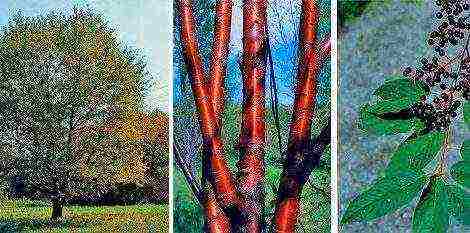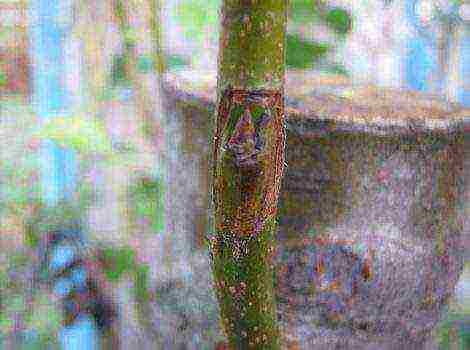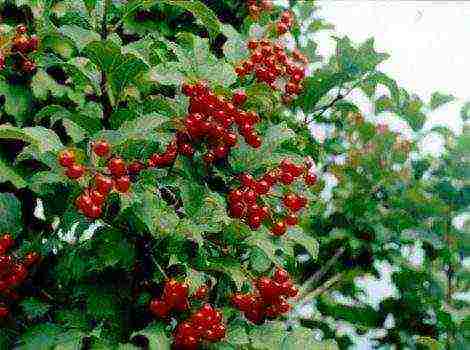Content
- 1 Detailed description of the pear variety Severyanka red-cheeked
Detailed description of the pear variety Severyanka red-cheeked
There are a huge number of pear varieties, but not all of them will take root throughout Russia. One of these universal trees will be Severyanka.
She is able to withstand harsh climatic conditions, thereby attracting the interest of gardeners living in the northern regions of the country.
Description of pear variety Severyanka Krasnoshchekaya
The variety was bred in 1959 P.N. Yakovlev on the basis of the Institute of Genetics and Breeding named after I.V. Michurin.
Medium tree, the crown of medium density in its shape resembles a wide pyramid. The branches extend from the trunk at an angle of almost 90 degrees, the bark of the trunk and skeletal branches is gray.
Shoots of medium thickness, light green, slightly pubescent. The leaves are ovoid, the base is rounded, and the tips are pointed, the plate is concave, and the edges are distinguished by the presence of frequent carvings. The petiole of the tree is short, the stipule is similar to a saber.
Flowers are collected in inflorescences, most often 4-6 pieces, the color of the petals is white, the stigmas are located below the anthers.
Ripening period falls on the tenth of August, and lasts until mid-September.
Severyanka has good frost resistance, therefore, it is zoned for the Western, Siberian and Ural regions.
Fruit characteristics
According to the description of the pear of litter Severyanka Krasnoshchekaya conical in shape and look like a light bulb... At the beginning of the ripening period, the fruit is greenish with a pink blush, gradually it turns yellow. The skin is firm but not rough.
On average, one pear weighs 80-100 grams, which is small enough for such a fruit crop. The pulp is sweet, juicy, not tart, delicately creamy color, there is no pronounced aroma in this variety.
The seeds are placed in chambers, which are medium in size and small in space.
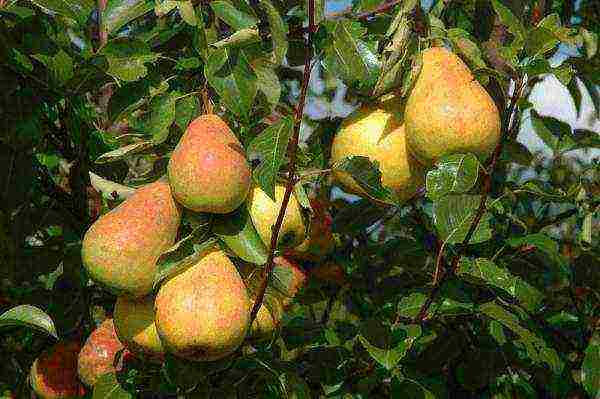
Breeding history and breeding region
Initially in 1959 at the Michurin Institute the Svetlyanka variety was bred... It was distinguished by good frost resistance and with dignity endured the harsh Siberian winters. The fire-house went on sale immediately after testing.
But the experiments of breeders did not end there, and a little later, at the station in Chelyabinsk, P.N. Yakovlev received the Severyanka variety by crossing the pears Lyubimitsa Klapa and Koperechka No. 12.
He is still popular among the Ural gardeners, but large-scale, industrial plantings of Severyanka are extremely rare.
Advantages and disadvantages
Pros:
- high frost resistance of the variety characterizes it well for cultivation in northern regions with a harsh climate;
- the Severyanka tree is small and compact, which makes it possible to grow pears even on small plots of land;
- early ripening, you can pamper yourself with fresh fruits already in August;
- with proper care, one tree brings up to 100 kilograms of harvest;
- Severyanka is scab resistant;
- used for various purposes.

Minuses:
- a large number of fruits fall off before the due date, so you can not skip the harvesting period;
- the pears themselves are quite small in size and do not differ in outstanding taste;
- this variety must be watered in a timely manner and abundantly, because it does not tolerate an insufficient amount of moisture;
- short shelf life and poor transportability make Severyanka unattractive for commercial purposes.
Features of planting seedlings and care
To plant a tree in a garden plot, first you need to decide on the place where it will grow... In this case, the features of the selected variety must be taken into account:
- sandy loam or loamy soil with a lot of humus is best suited for Severyanka;
- groundwater should be at a distance of no closer than 2 meters from the surface of the earth, otherwise the root system of the pear may erode and the tree will die;
- you also need to provide reliable protection from the wind and good sunlight.
The time is chosen depending on the climate and the region of cultivation., a tree planted in the fall is less likely to survive a harsh winter.
For a pear dug pit, the dimensions of which will be 60 centimeters deep and 1 meter wide... At the bottom of the pit, a fertile mixture is laid, consisting of:
- 2 buckets of compost or humus;
- 200 grams of potash fertilizer;
- 800 grams of superphosphate.
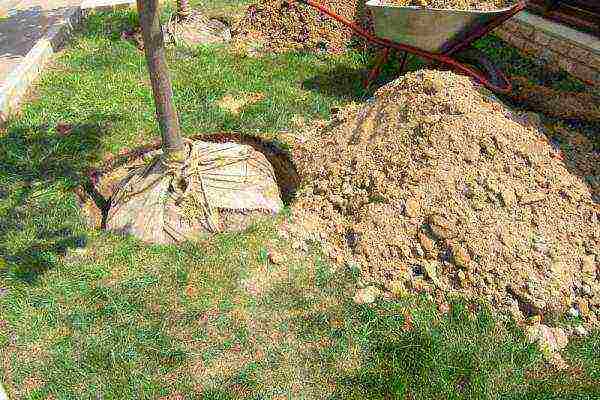
The prepared soil must be infused, therefore digging a hole should be a week before planting trees:
- To begin with, the roots are dipped in a clay mash.
- Then damaged and broken branches are removed, so that the plant would spend more energy on adapting to the new terrain, and not on healing.
- Then the seedling is placed in a hole and carefully covered with earth.
- A peg is neatly placed next to the tree, which will act as a support, a newly planted plant is tied to it.
- The last step will be abundant watering.
Growing conditions
The Severyanka variety can please the gardener with fruits already in the 4th year of life, but for this you need to properly care for the tree and give it the necessary nutrients.
Immediately after planting, the seedling is pruned. If there are no skeletal branches on it yet, then the stem is cut at a height of 80-90 centimeters from the ground.
Then the tree will only need sanitary pruning., thanks to which the gardener gets rid of sick, dead or excess branches. Shoots are regularly removed from the tree.
In order for the roots to get as much oxygen as possible, it is necessary loosen the ground in the trunk circle... It is also necessary in a timely manner get rid of weeds.
Considering that Severyanka loves moisture you need to water it regularly, preventing the soil from drying out.
In the summer, once a season, mineral fertilizing is applied, while in the fall the tree is fertilized with humus or manure.
Although Severyanka belongs to frost-resistant varieties, it needs to be properly prepared for winter... To do this, before the start of frost, the tree is abundantly watered and mulched, thereby protecting the root system.
Harvesting and storage
The harvest period falls in mid-August. and can last until early September. Closer to the autumn period, the pulp of the pear acquires a brown color.Ripe fruits begin to fall off and within 2-3 days the tree loses the bulk of the crop.
If you pick pears fully ripe, then they will be stored for no more than 10 days... In doing so, they need to provide a cool temperature and wooden or wicker containers.
Experienced gardeners recommend harvesting the fruits a week before the onset of full ripeness, in which case the least amount of the crop will fall off and it will be stored much longer (2 months).
The best place is considered to be a cold cellar., but use the lower compartment of the refrigerator instead.
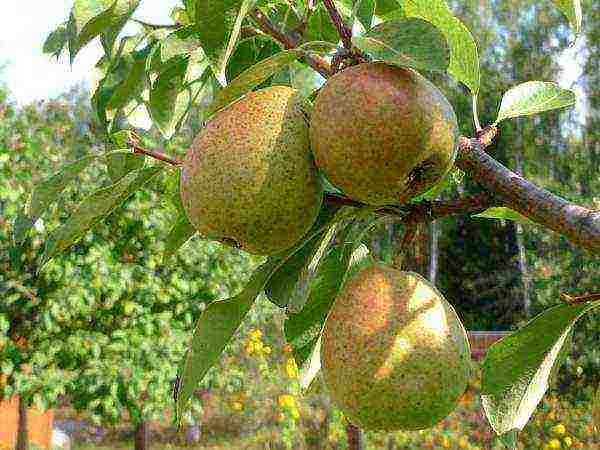
Peculiarities
The main distinguishing feature of Severyanka is high winter hardiness. Cases were recorded when, with short-term frosts up to -50 degrees, only young trees died, and with a stable temperature change up to -42 degrees, only the aboveground part of the tree froze out, while the root system was preserved.
Also such the variety quickly recovers after frost.
This is explained by the fact that breeders have bred many other frost-resistant varieties that are more attractive and have more advantages.
Severyanka is used in scientific work, and it has already become the parental form for such varieties as Yeseninskaya and Tyutchevskaya.
Another feature of the variety will be the need for pollination., because with an independent procedure, only 30 percent of the fruits will be tied.
The best pollinator for Severyanka will be Pamyat Yakovlev, such trees are advised to be placed next to each other.
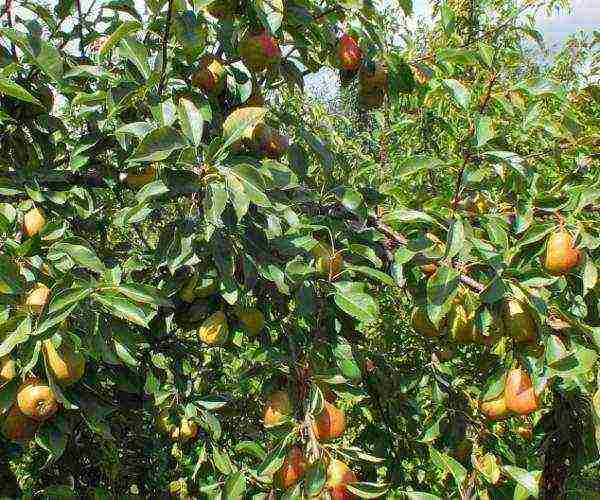
Diseases and pests
Severyanka is extremely rarely exposed to diseases and pests. Has good scab resistance. Most often, the following diseases are found on trees of this variety:
- Microplasma disease or "witch's broom" is the most dangerous disease for the fruit tree. It spreads through insect pests or seedlings. The focus of the disease cannot be cured, and in this case, the tree will have to be completely uprooted and burned.
- Fruit rot - affects pears, the first stage is the appearance of brown spots, which grow over time and destroy the crop, chlorine copper or brodsky liquid is used as control methods.
- Bacterial burn - appears after freezing leaves. If a disease is detected, the tree is sprayed with antibiotics every 5 days. To avoid the spread of bacteria, all instruments are treated in boric acid.
As a fight against her when a large number of caterpillars accumulate on a tree, it is treated with Karbofos, Iskra or other insecticides.
The main method of dealing with any disease or pest will be the removal of all traces of their habitat, i.e. infected parts of the tree, fallen fruit or leaves, which must be burned immediately.
As a preventive measure against diseases trees need to be well looked after, watering, fertilizing and sanitary pruning should be carried out on time. In autumn and spring, it is recommended to spray the plant with Brodsky liquid.
When working with any chemicals, you must use personal protective equipment.
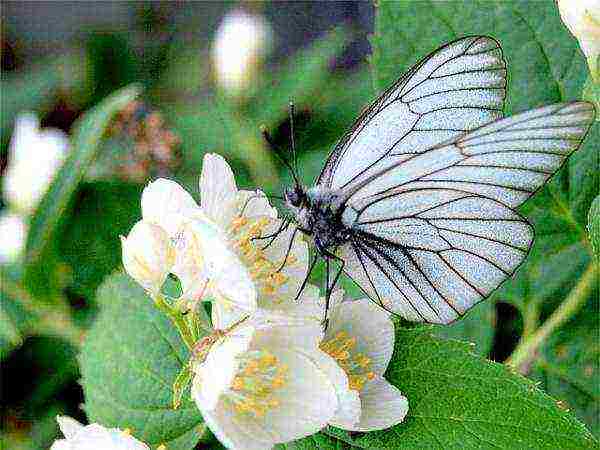
Gardeners reviews
Galina: “Severyanka is the oldest inhabitant of my garden. The harvest gives a huge amount, in the early years they overeat, now it even remains. I use this variety to make juices, and recently I started to dry pears.The taste of the variety is very pleasant, sweet and sour with a slight astringency, the pears are relatively small with a red barrel. Taking care of a tree is not difficult, especially now that it is already mature and adapted to our climate. "
Olga: “My father began to grow Severyanka, our dacha is located in the Urals, so it is very difficult to find a good variety of pears. Now there are many fruit trees on the site, which are several times better than the Severyanka, but I can not dare to uproot it. It bears fruit steadily from year to year, tolerates low temperatures, and also has a pleasant taste. Compote from this variety is the taste of my childhood and I myself continue to make it for my children. "
Vladimir: “There are a lot of different trees on my site, and Severyanka played an important role here. It is an excellent pollinator for many varieties, moreover, using the stock with its help, you can get other fruits of better quality in taste and shape. Our winters are harsh and a mature tree tolerates them perfectly. "
Severyanka has long lost its relevance and is not currently used commercially.
But amateur gardeners do not want to say goodbye to this tree., finding more and more advantages in it, sometimes without noticing the numerous disadvantages of the variety.
